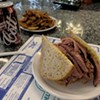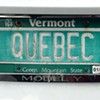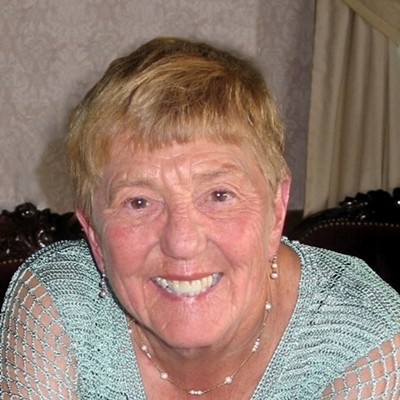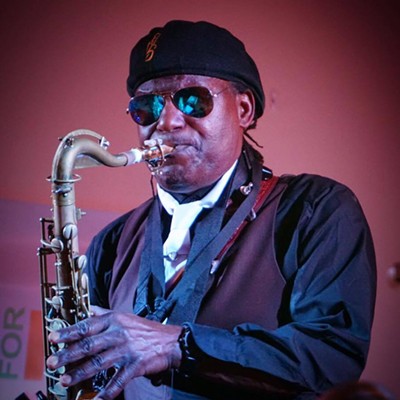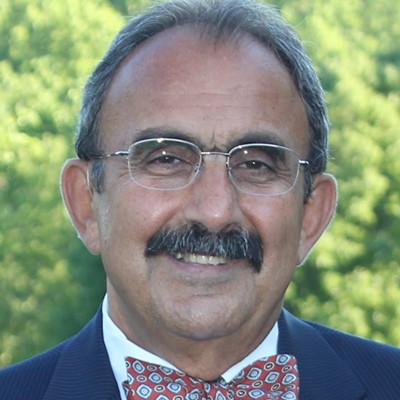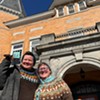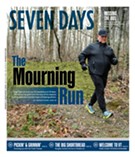click to enlarge 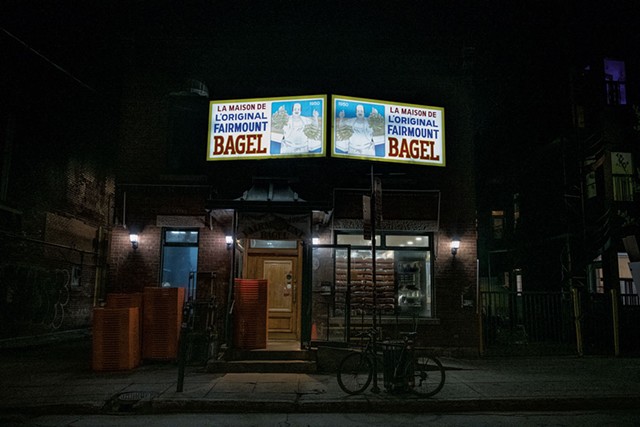
- Daria Bishop
- The Fairmount Bagel storefront
The agent at the Vermont-Québec border perked right up when he heard the reason my wife and I were visiting Canada on a Monday morning last month. "Montréal bagels are so good," he gushed in a French accent. "I love the sésame when fresh from the oven."
Once the iconic breadstuff of the Jewish diaspora, the bagel has entered the pantheon of secular staples — food items stripped of ethnic heritage and endowed with all-access status.
Not so in Montréal, Québec, where its devotees are fierce and uncompromising. North-of-the-border bagels are different: denser but lighter, sweeter, thinner and less bread-like than U.S. bagels. The hole is bigger, too. Legend says the round shape was to approximate the stirrup of a Polish cavalryman. In the Burlington area, Myer's Wood Fired, at 408 Shelburne Road, upholds the culinary tradition cooked up in Québec.
click to enlarge 
- Steve Goldstein
- St-Viateur bagels
In search of the source, I found myself in the Mile End section of Montréal, where a large number of Jews settled between 1904 and 1914, according to the late Joe King, the neighborhood's unofficial historian. The district is still home to many of present-day Montreal's 90,000 Jews. A mix of hipsters and Hasidim, foodies and foreign new arrivals, it resembles Brooklyn's Williamsburg.
The founders of Montréal's bagel business — a Pole, a Russian and a Ukrainian — escaped pogroms and antisemitism in Russia and Eastern Europe to come to Canada. Jack Shlafman and his Russian family started what's now called Fairmount Bagel in 1919. Myer Lewkowicz of Poland and Chaim Seligman of Ukraine founded St-Viateur Bagel in 1957. Both still operate.
Running the show at St-Viateur, on the street that bears its name, is a genial, courteous white-haired Energizer Bunny named Joe Morena, perhaps the only Yiddish-speaking southern Italian in this Francophile province.
Morena started working at St-Viateur in his teens; his first job was bringing in wood for the oven. He was training to be an accountant, "but I never got there," he noted. For years he resisted Lewkowicz's attempts to get him to take over the business. Until one evening, hungering for bagels, "Yossel" — as Lewkowicz called him — went into the store and made himself a dozen. He enjoyed it. He bought St-Viateur in 1974.
click to enlarge 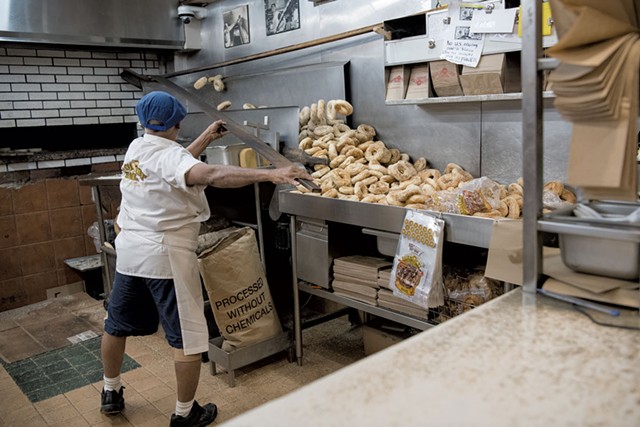
- Daria Bishop
- Fairmount Bagel
The storefront is narrow and deep with a homely cord separating the front and back ends of the operation. "The recipe hasn't changed much," Morena explained. He makes dough from water, all-purpose flour, egg and yeast. Molasses used to be added until it was replaced by malt flour.
A slab of dough the size of a Samsonite sits in front of Pedro Benitez, the roller, who slices off a chunk and deftly performs a kind of origami ending with a final twist, like a farmer snapping a chicken neck. A bagel is born. The slab of dough can produce 80 dozen bagels, Morena said. The bakeshop produces 35 dozen an hour.
After they're formed, the bagels go for a swim, in a three-minute bath in boiling water sweetened with honey. Then it's into the wood-fired oven on a wood paddle, roughly 10 minutes per side. Seeds are added later. Traditional Montréal bagels are either "black" or "white" — that is, poppy or sesame. The latter, which the Québécois call sésame, is by far the biggest seller.
click to enlarge 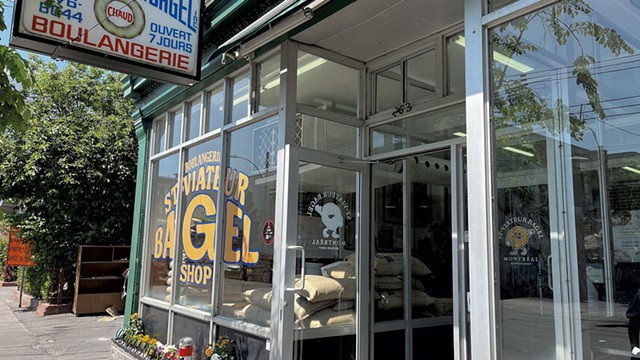
- Steve Goldstein
- St-Viateur Bagel
(The topping Myer's calls "Montréal spice" is not an option at either St-Viateur or Fairmount. That particular concoction of spices and herbs was developed at nearby Schwartz's deli, as a meat seasoning, and is available by the jar.)
The "everything" bagel here is tout garni.
"All I eat are sesame bagels," said Morena, who will be 75 in July.
How then to account for the blueberry, maple-apple and butterscotch caramel varieties at St-Viateur? Morena rolled his eyes. "My kids," he said. His three sons are all making bagels.
On the return trip to Vermont, thoroughly stuffed with Canadian carbs, we got the same question about the purpose of our trip from U.S. Customs and Border Protection. The young man in uniform offered his own unsolicited opinion about the Montréal bagels we'd been eating all day. As we drove off, he yelled, "Not as good as New York."












































